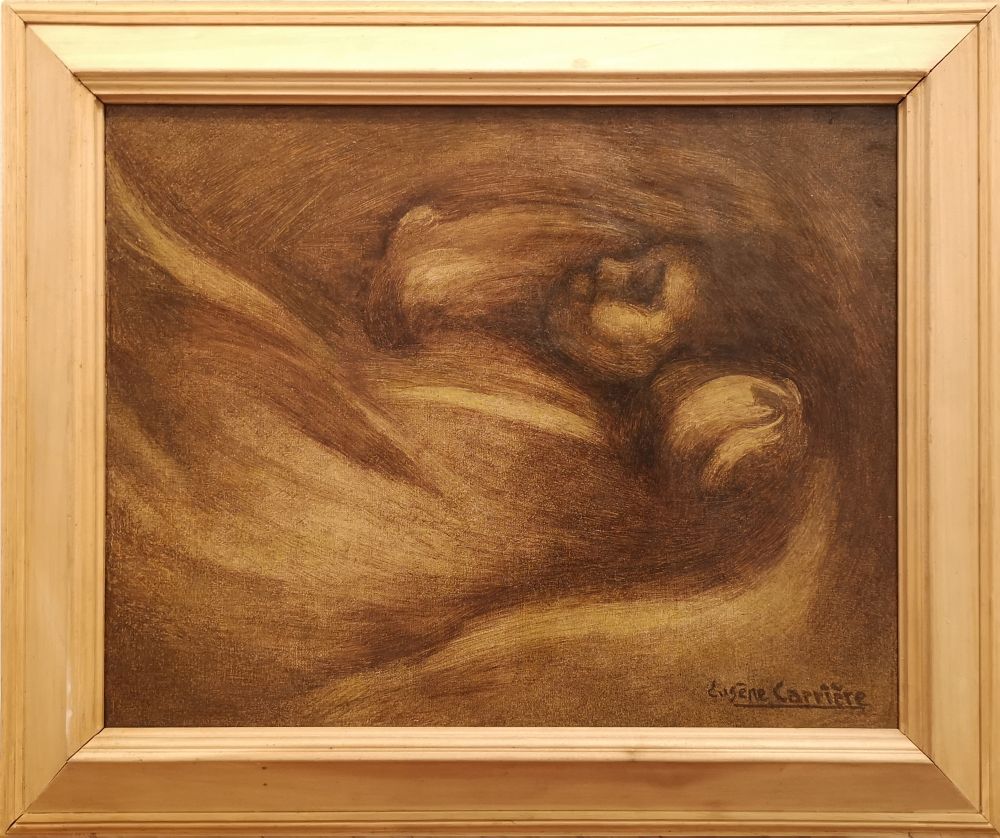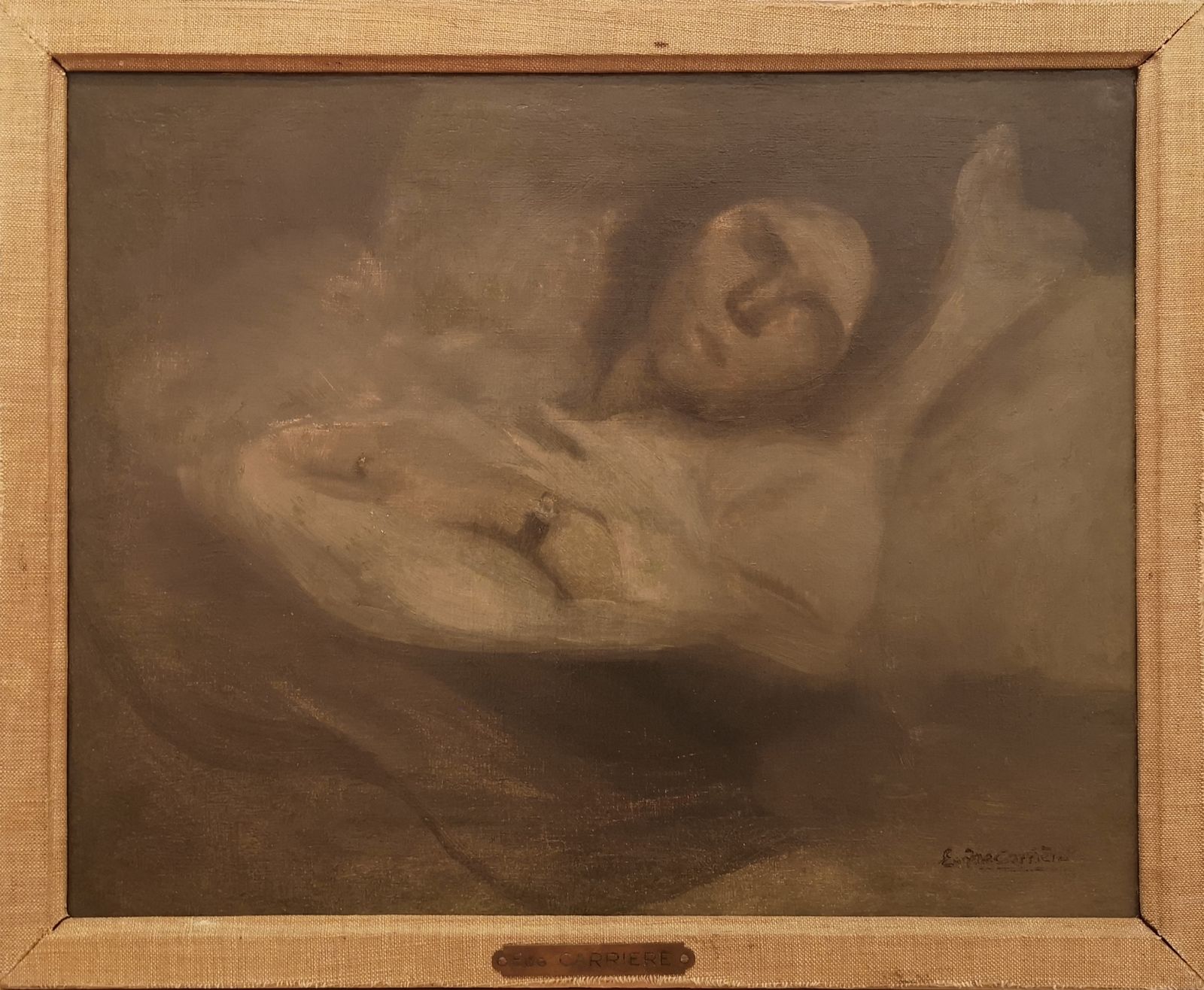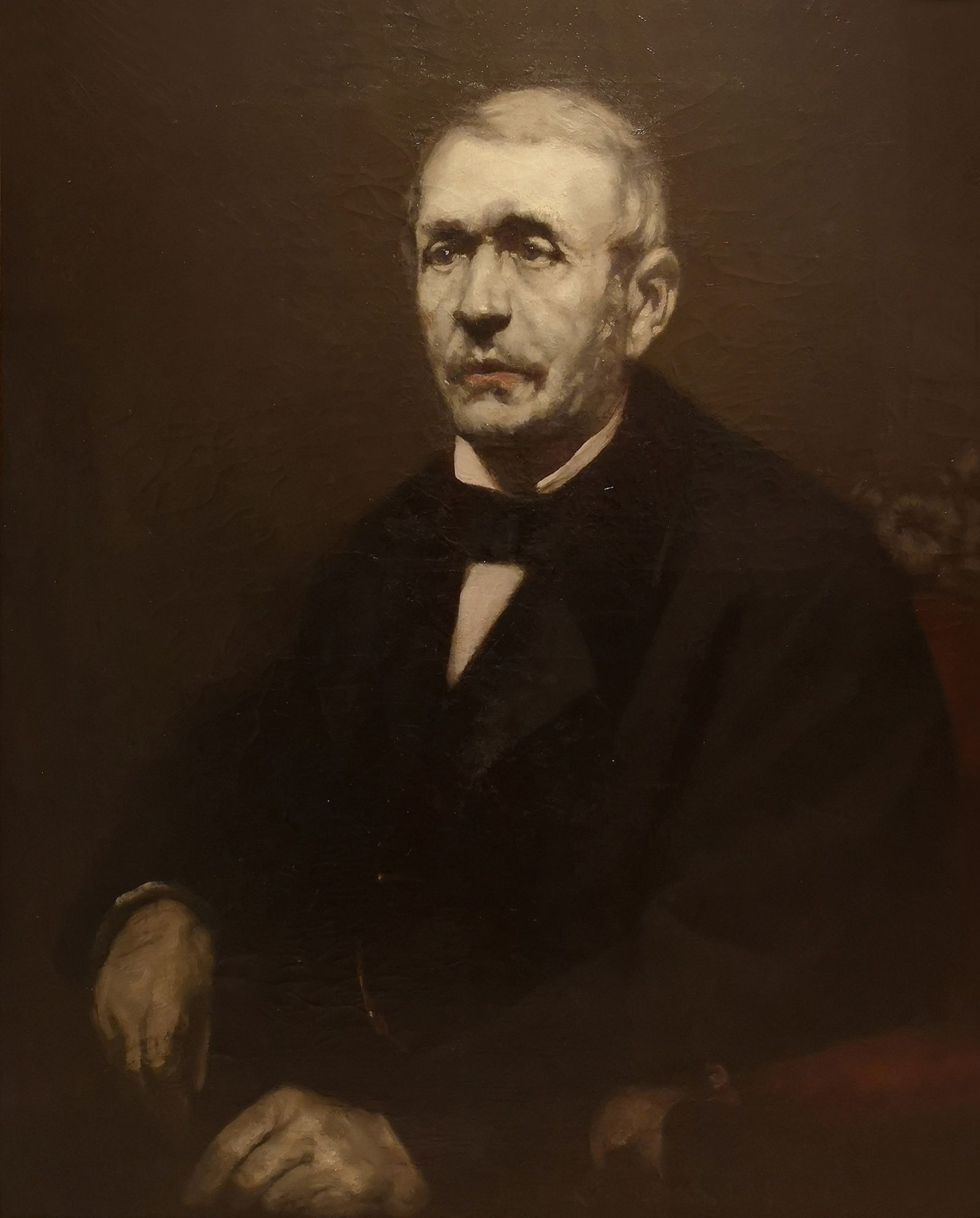Eugene Carrière

Selected Works

Eugene Carrière
Sans titre
Huile sur toile
33 x 41 cm

Eugene Carrière
Portrait d'homme, 1883
Huile sur toile
81,5 x 65 cm
Signé et daté en bas à droite

Eugene Carrière
Enfant dans un lit
Huile sur toile
33. x 41 cm
_signé en bas à droite_provenance Collection Jacques Benadore Genève copie3.jpg)
Eugene Carrière
Femme se reposant
Huile sur toile contrecollé
36,5 x 44,5 cm
Some of the works depicted are no longer available.
Biography
An art of suggestion par excellence, the work of his career evolved towards a monochrome of earth and ochre, inspiring Picasso, which only retained the play of shadow and light. Misunderstood by the general public, this slow evolution was praised by Gauguin and Maurice Denis.
Witness of his time, Carrière participated in the movement of ideas: he defended Dreyfus alongside Clemenceau and Zola, female emancipation, etc. Never dogmatic, he defended a humanism that placed education at the centre of concerns.
At the dawn of the new century, between tradition and modernity, he became a reference artist. In 1899, he taught at the Académie Carrière where his students, Matisse and Derain, found a creative freedom conducive to their development; these same students, " Les Fauves", exhibited at the Salon d'Automne for which Carrière had fought so hard and of which he became the first president.
